A couple of days ago I set out for a fun winter night on the town. Having been in LA for some time so far this season I haven’t had the change to fully transition to the Denver December. Ten outfits later, I was ready to go. And believe it or not, I had partially bare legs, made possible by thick thigh-high socks and many layers elsewhere. Victorian women did not have such options.
While we may get out our cozy sweaters just once a year, many of us will wear many of the same clothes in winter, adding layers and jackets to keep us warm. Victorian women, however, had entirely different wardrobes for winter that would be carefully stored away the rest of the year. They were full of fabrics soft to the touch, fur, and deep colors.
Let’s take a look at a winter wardrobe – the Victorian way.
Winter colors
There may have been a time when the one rule about what color to wear during what time of year was no white after Labor Day. As we explored on the blog last year, this guideline is largely obsolete. The Victorians were not as flexible.
One easy way to know the time of year of a Victorian image is by the color of a woman’s dress. As we have seen in some of the posts from the ‘colors in the Victorian era’ series, there was a fairly strict protocol to what colors should be worn during what time of year.
Quotes from Color in Dress, 1870
“Of all colors, red and its modified hues are most suitable for winter costume. The warm, pleasing effect of a scarlet cloak on a cold winter day is well known.”
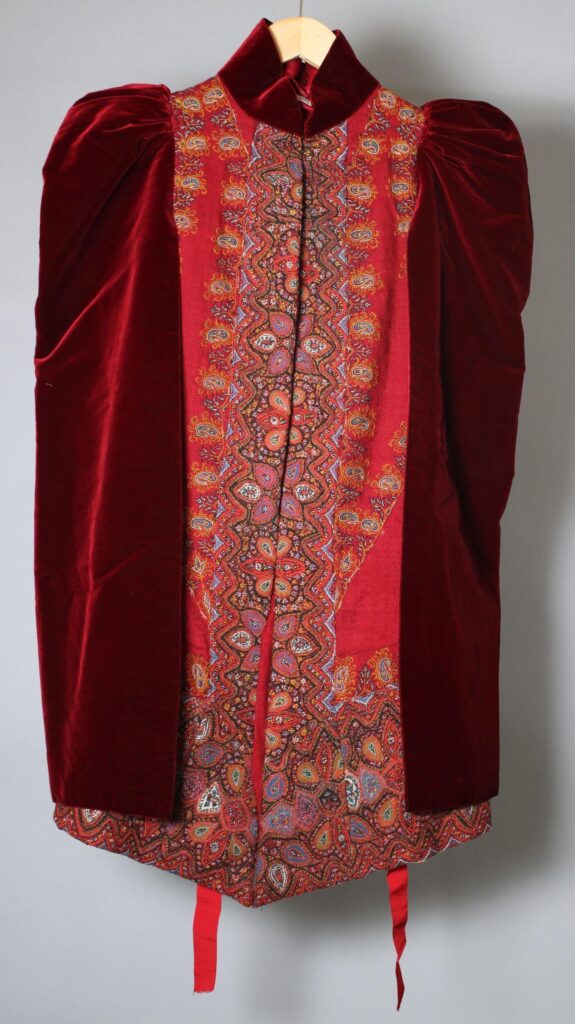
Image source: V&A museum
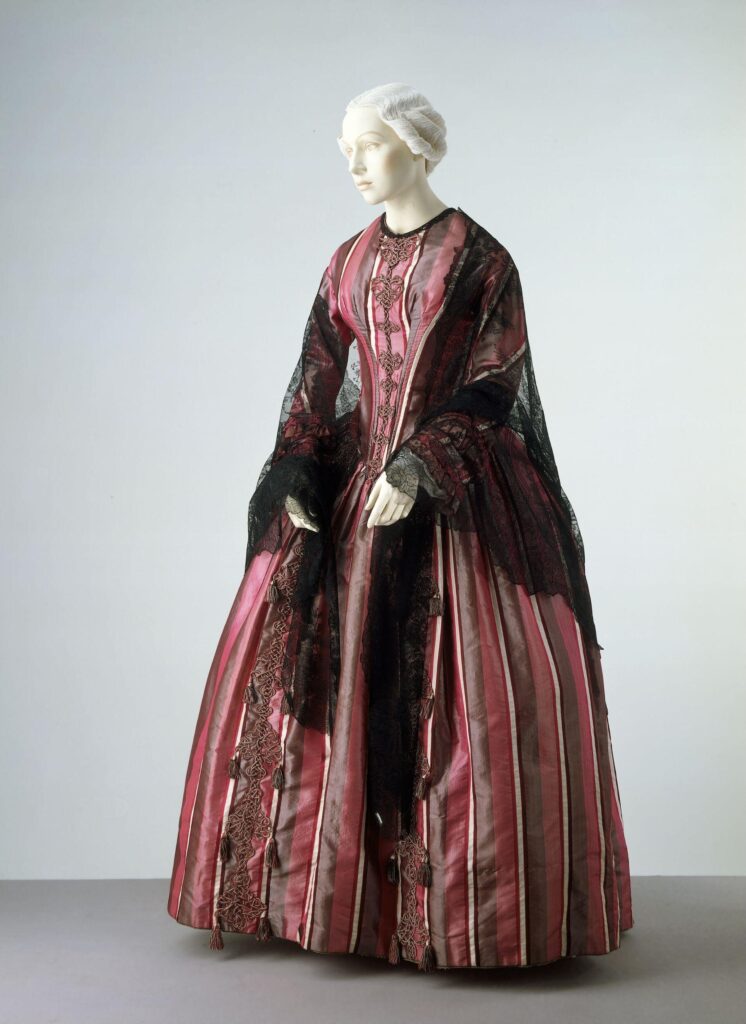
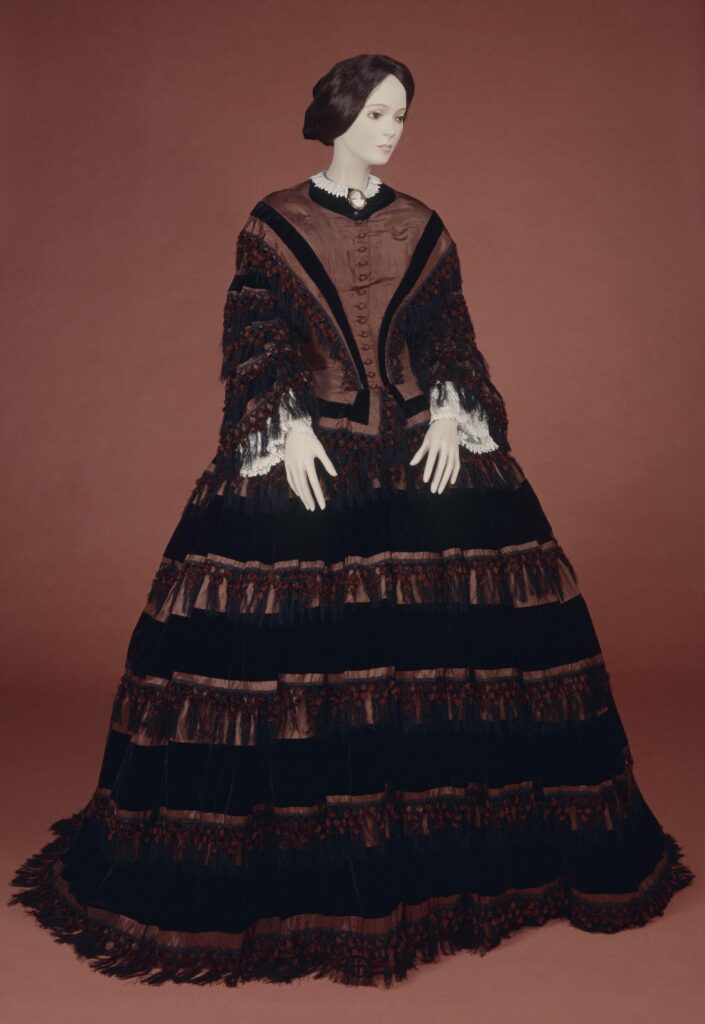
“Purple is suitable for winter, spring, and autumn costume.”
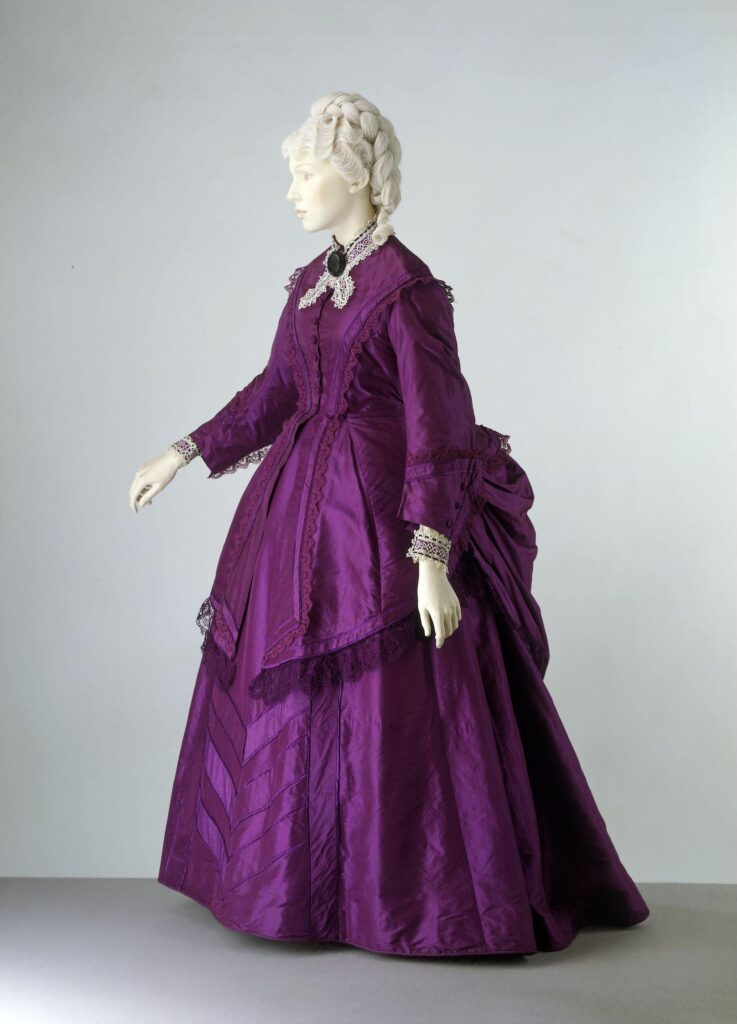
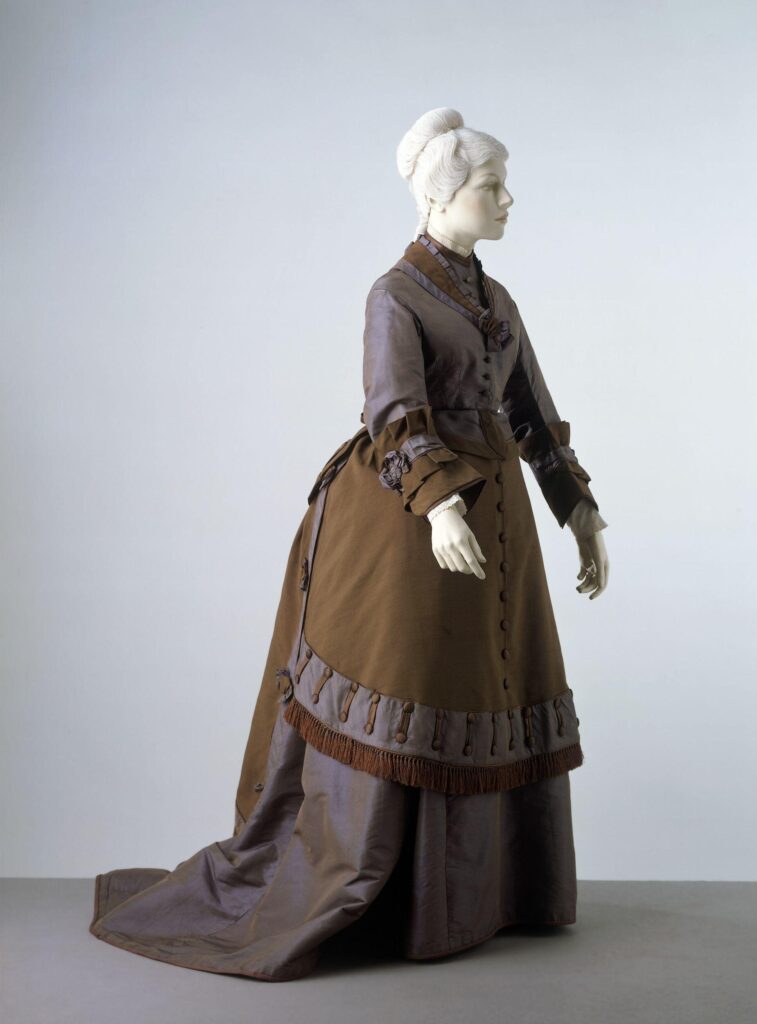
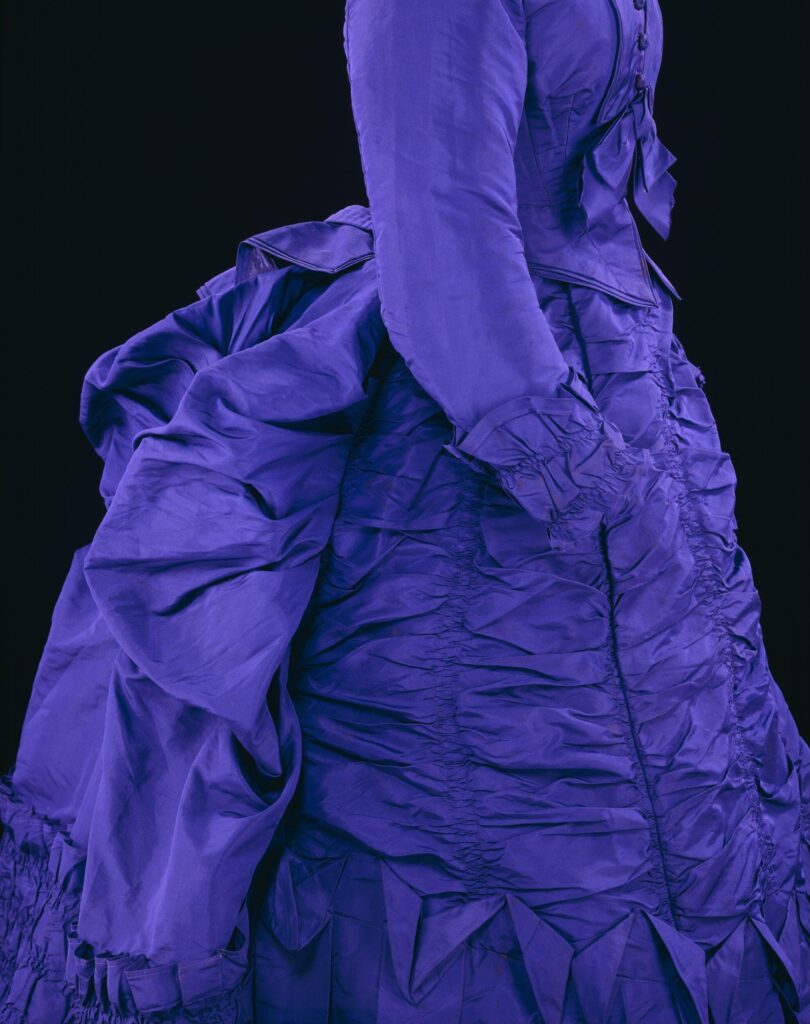
V&A Museum
This one surprised me a bit:
“In dress, orange is most suitable for winter or very early spring.”
Are you interested in the way different colors were used in the Victorian era? Check out our series:
Seeing red: colors in the Victorian era
Purple, please. Colors in the Victorian era
Green with Envy: colors in the Victorian Era
Tickled pink: colors in the Victorian era
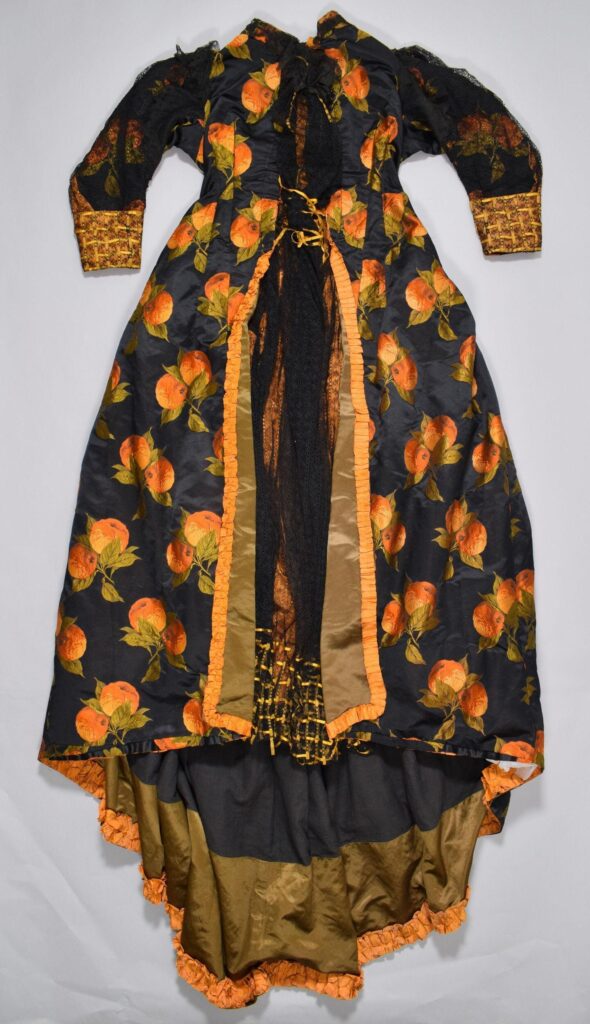
Dress for the occasion
Quotes from The Art of Dressing Well, 1870
Besides having a different wardrobe for each season Victorian women had different clothing for different times of day and also type of social event.
Morning dress – visiting
“A rich silk, in winter a velvet, in summer a lace cloak, light gloves, furs, if in winter, and a boot with handsome finish, will make the most appropriate costume.”
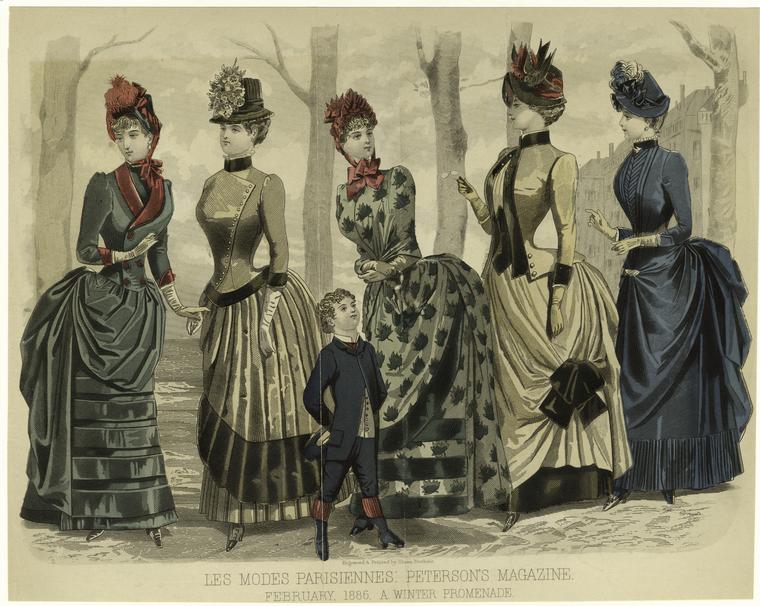
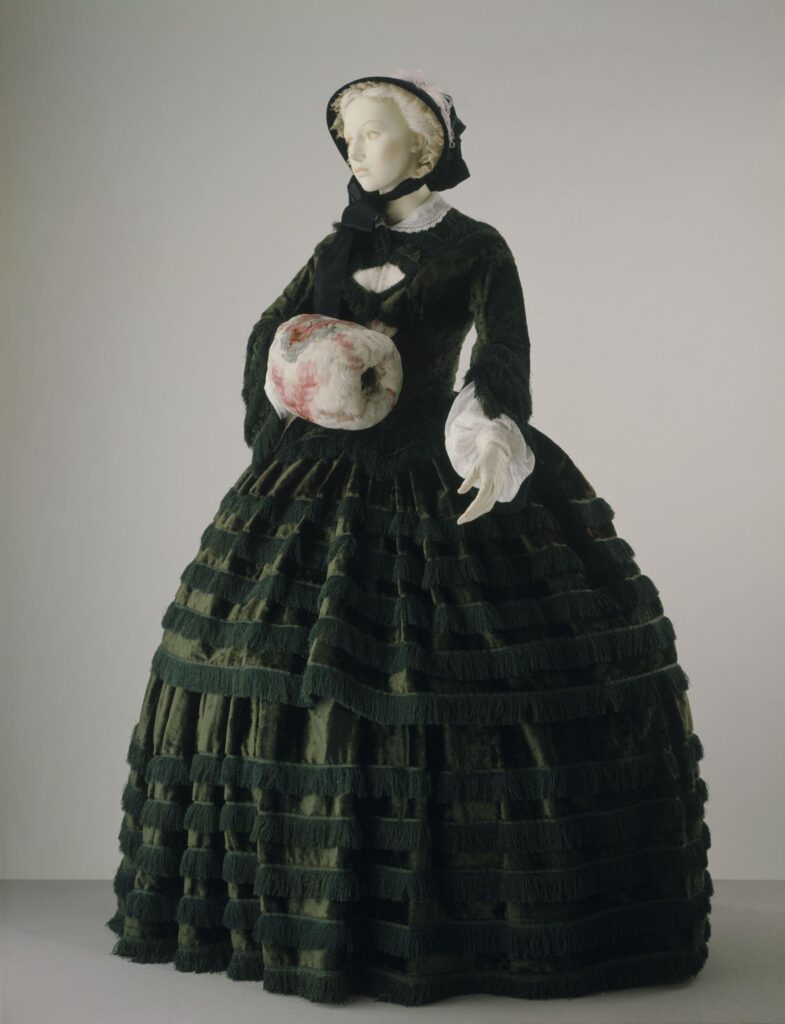
Image source: V&A Museum
Evening dress – calls
“Silk of a dark color in winter, finished with lace ruffles or collar and cuffs, ornaments of gold, enamel, or coral, and light ribbons in the hair, or a velvet ribbon head-dress, is suitable dress in winter for the evening call.”
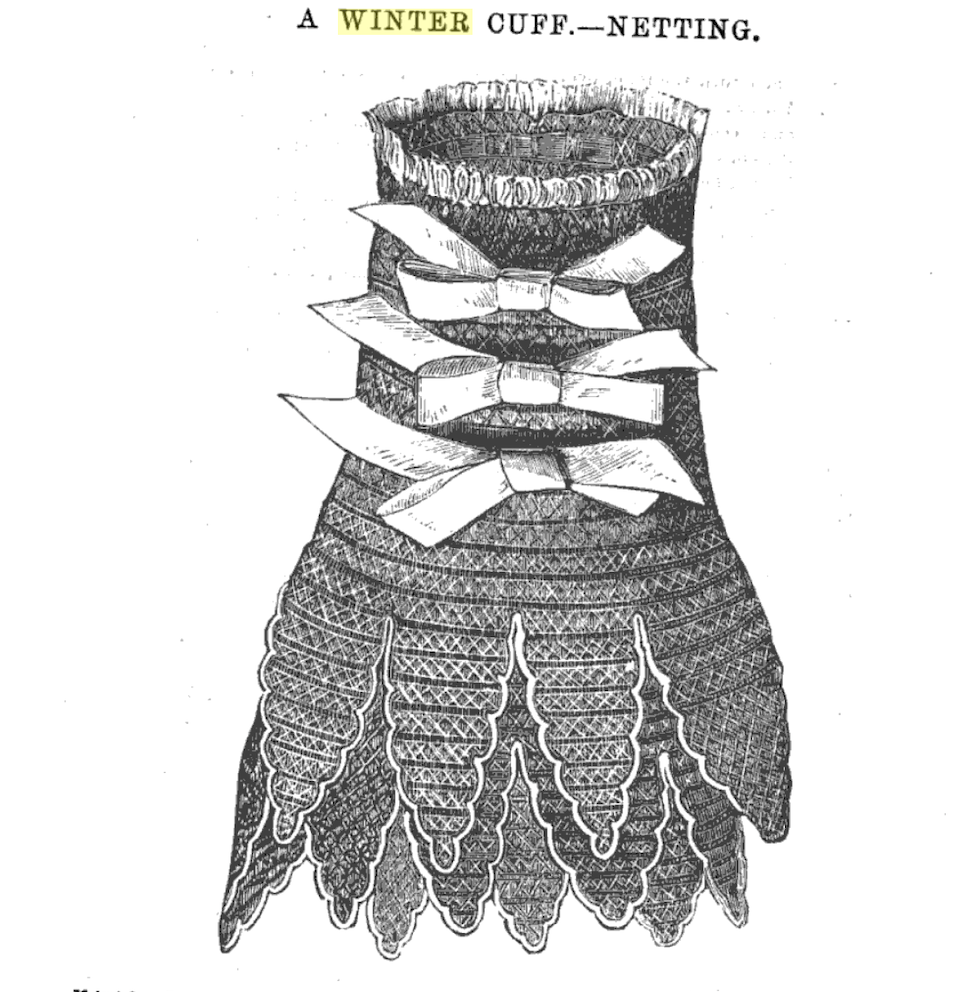
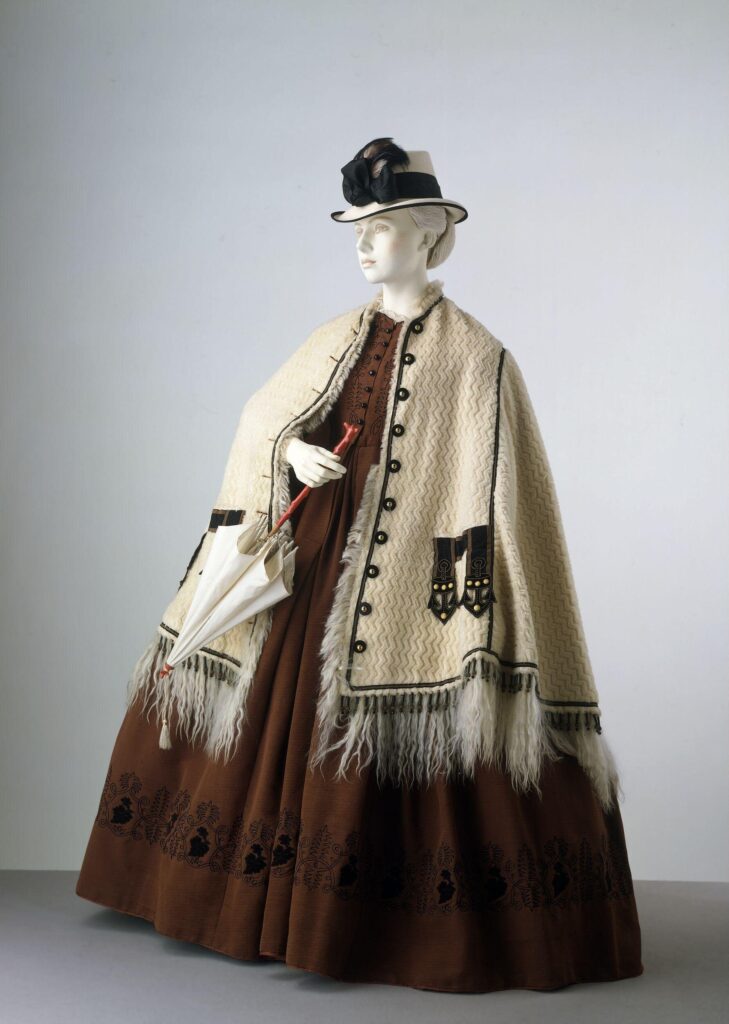

Accessorize it!
The winter aesthetic extended to accessories as well. Bonnets and hats, for instance, were of course made with darker colors and also with heavy embellishments to match the dresses. This also served the purpose of keeping them in place easier when exposed to the elements. The thicker materials would also provide warmth.
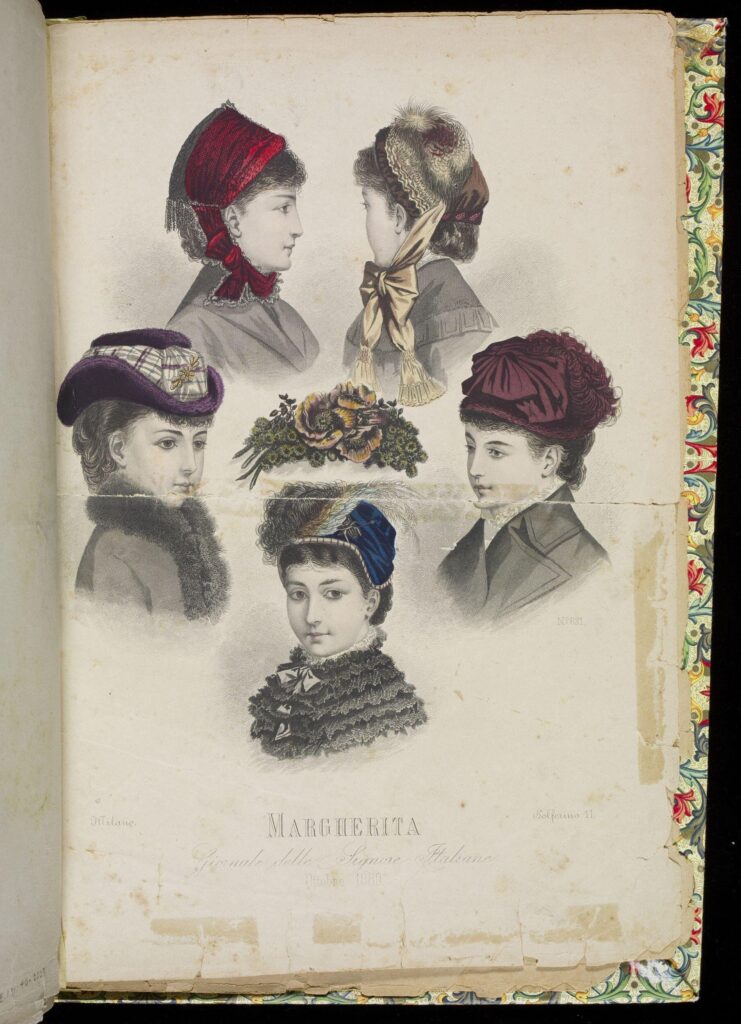
Image source: V&A Museum
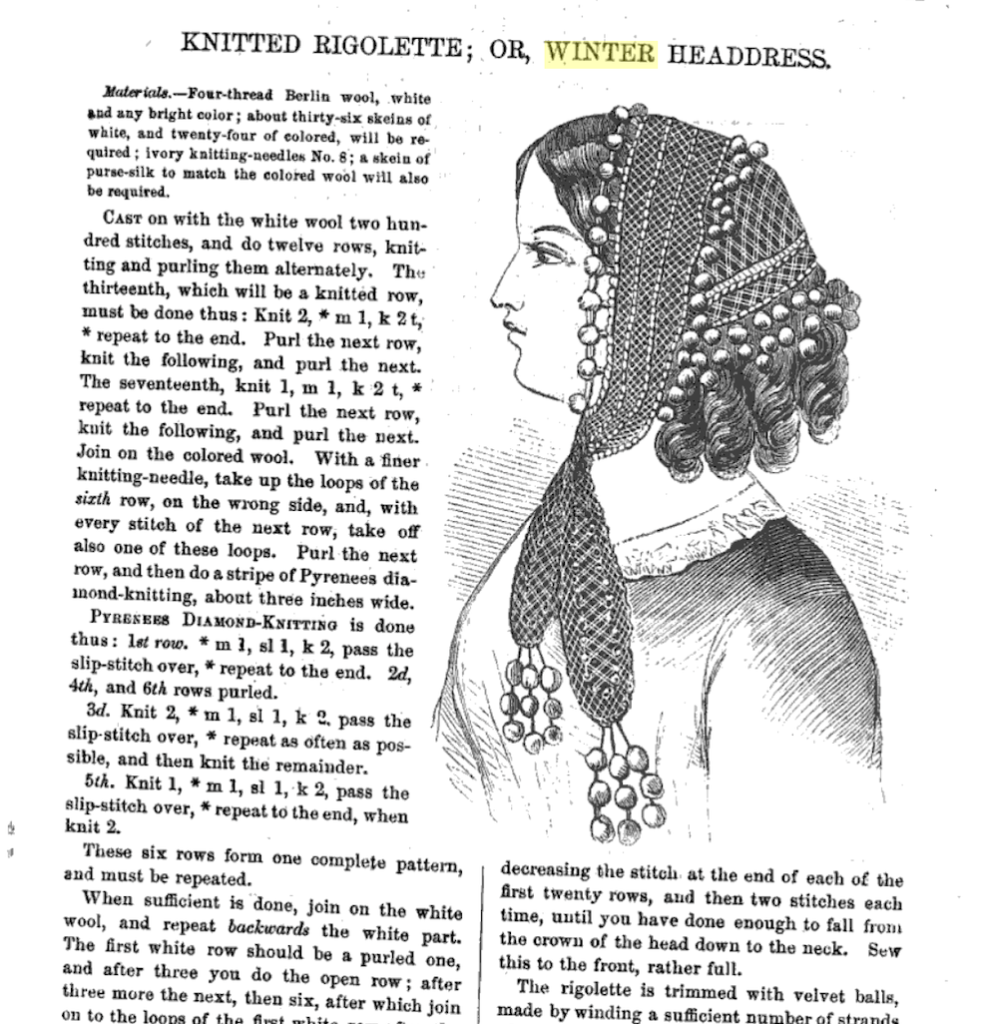
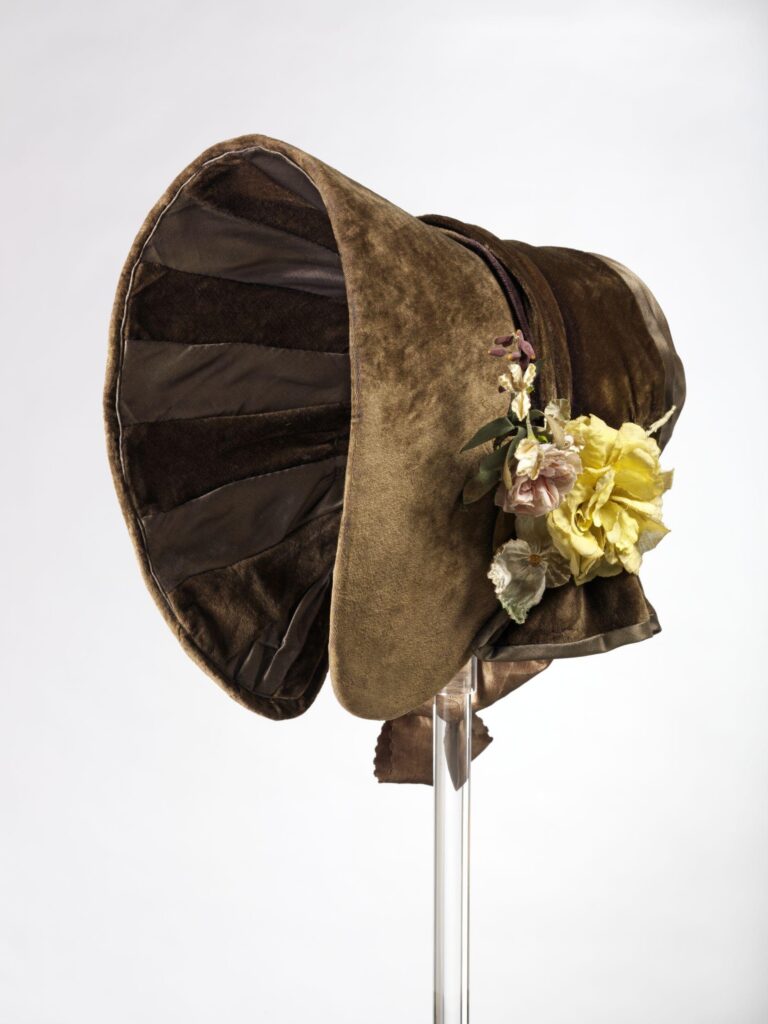
Feathers
I thought this reference to feathers from The Art of Dressing Well was worth noting:
“Feathers should only be worn in winter. They are as much out of place upon a summer hat or bonnet as fur would be upon a lace mantle.”
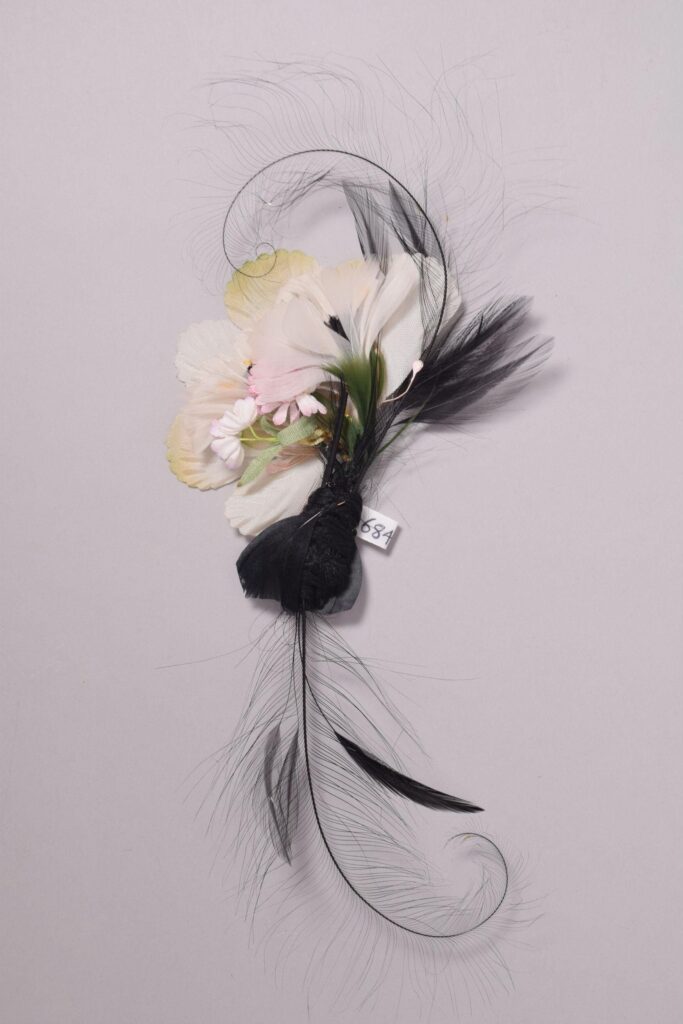
And speaking of feathers, check out these swoon-worthy muffs
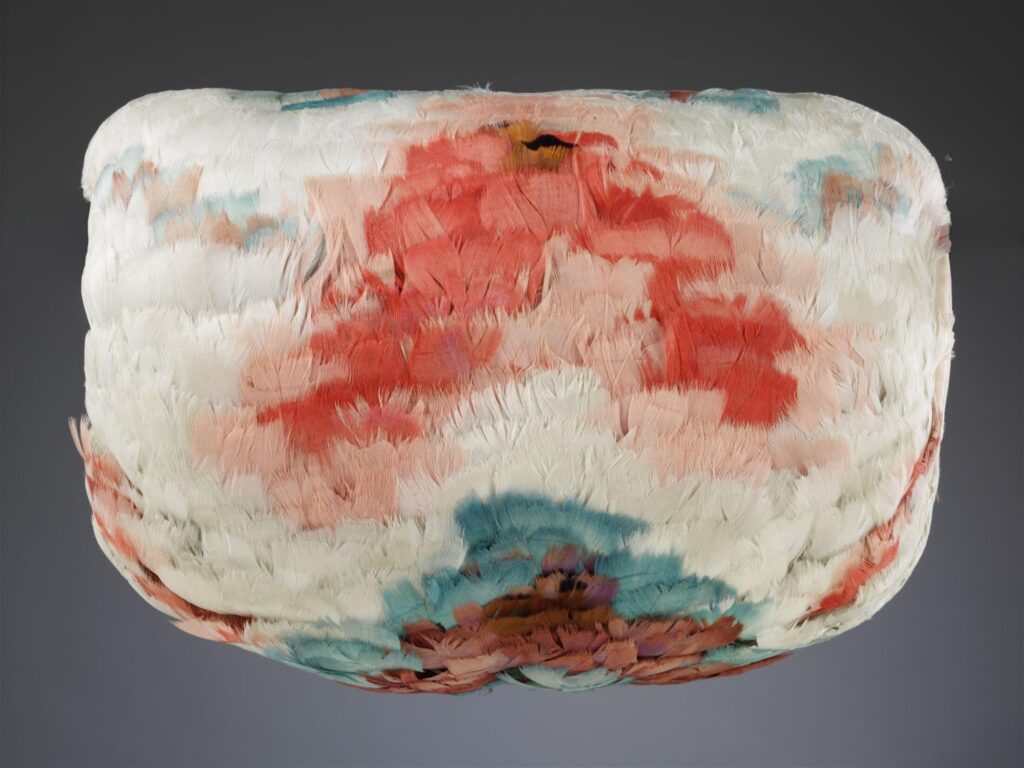
Image source: V&A Museum
Muffs are one of my favorite Victorian touches! Read all about their history on our post: A short history of the hand muff, one of history’s cutest accessories
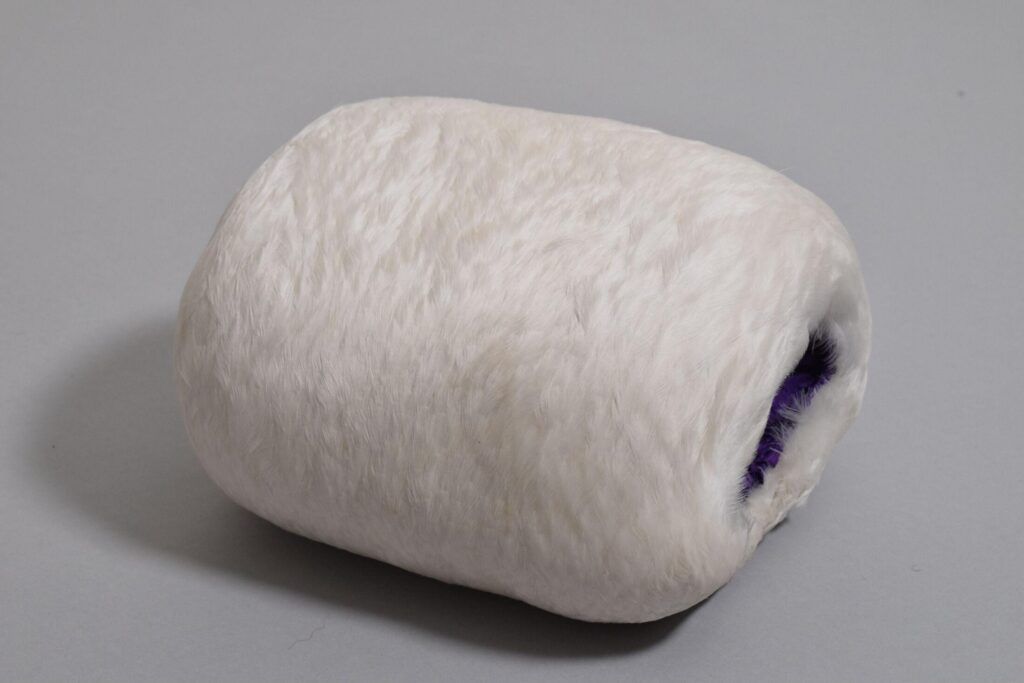
Image source: V&A Museum
Bundle up!
Because of the large sleeves and flared skirts Victorian women wore for much of the 19th century capes and cloaks were the primary way that they bundled up even more to head outside. One exception to this was during the 1870s when skirts were flat in the front, flared with a bustle in the back, and paired with form-fitting sleeves. Possibly because a cloak in this case would allow too much cold air in, jackets were designed to especially allow for the bustle.
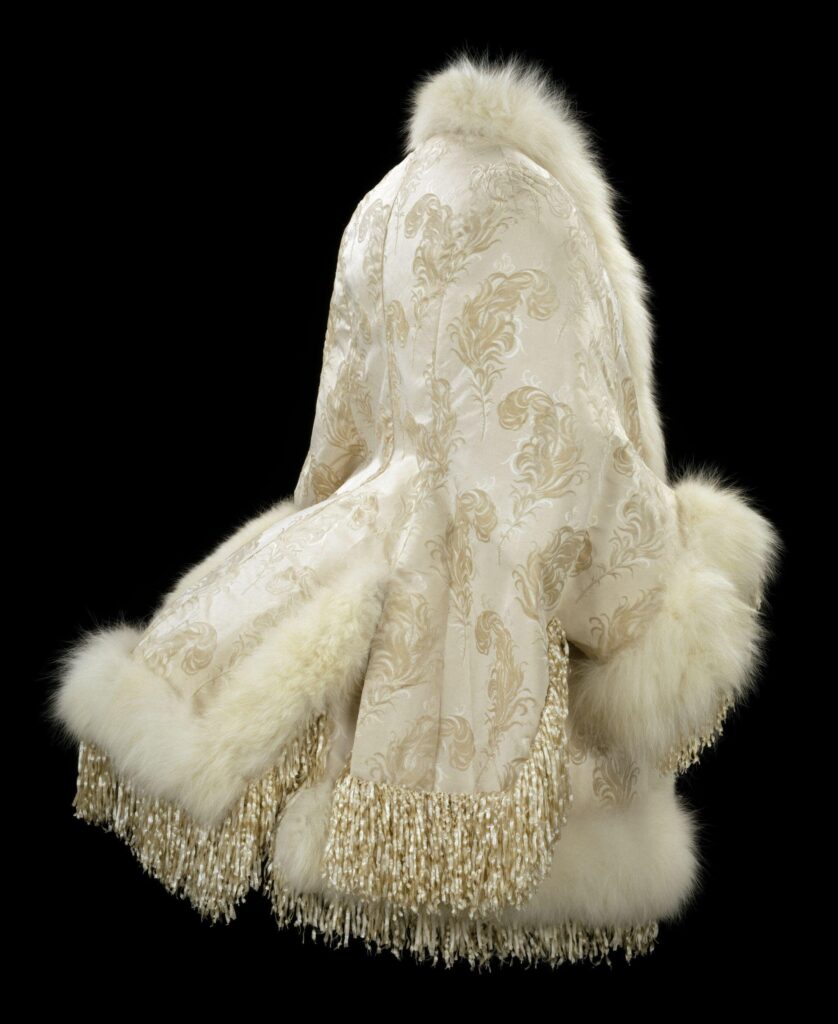
Image source: V&A Museum
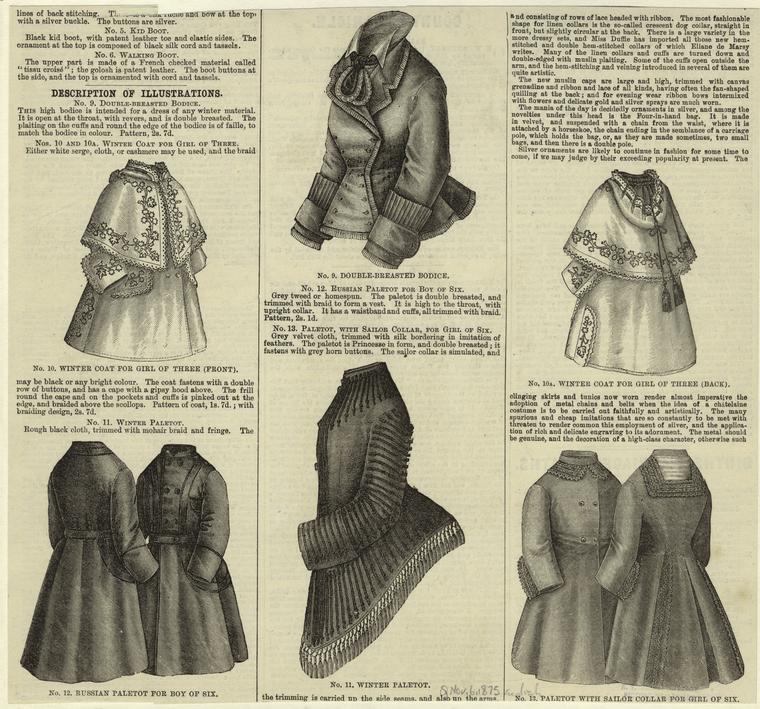
For much of the rest of the Victorian era heavy, fur-lined cloaks were the norm.
Love Victorian outerwear? Check out our post: The magic of the cape
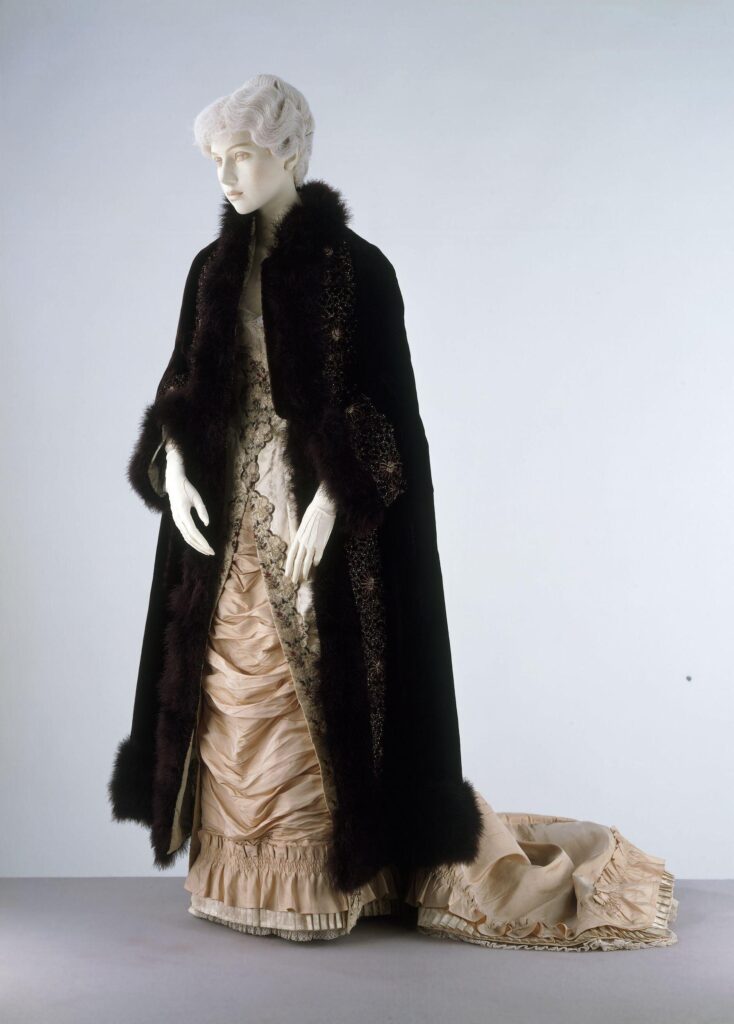

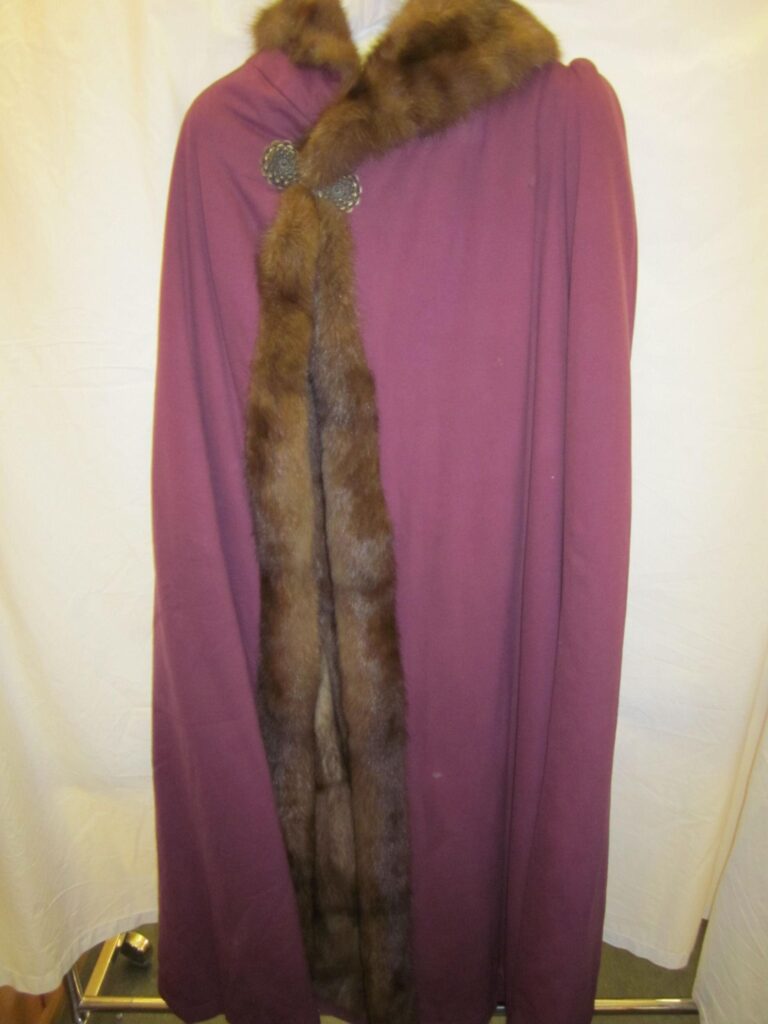
Get one of your own:
Love fashion history? Keep reading:
One hundred years of nightgowns: from the Victorian era to the 1950s


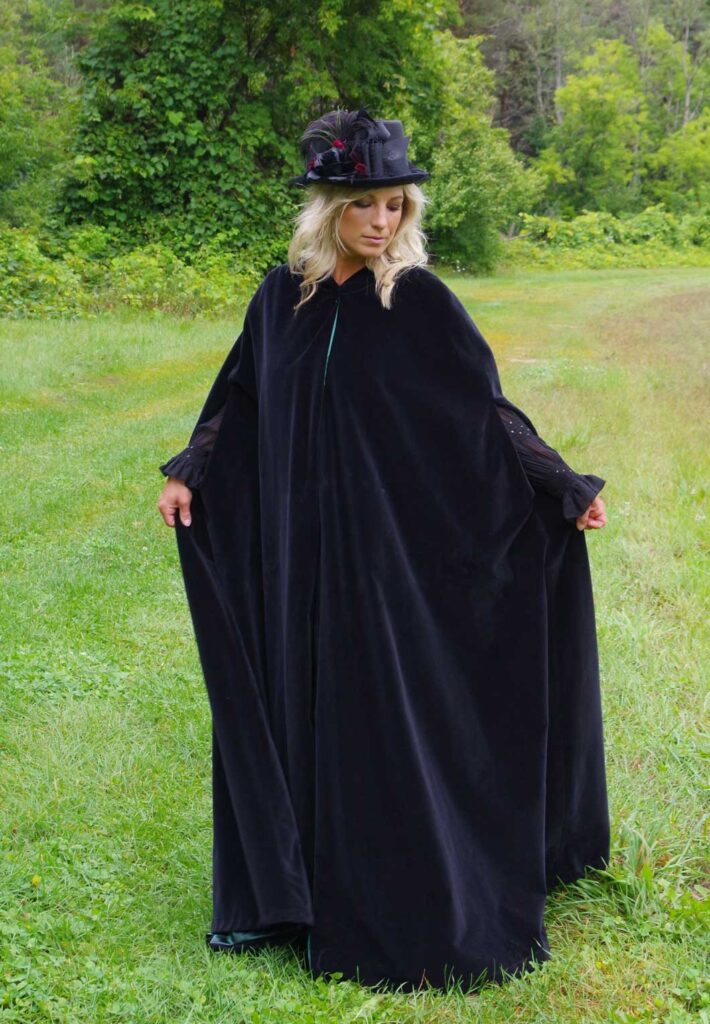
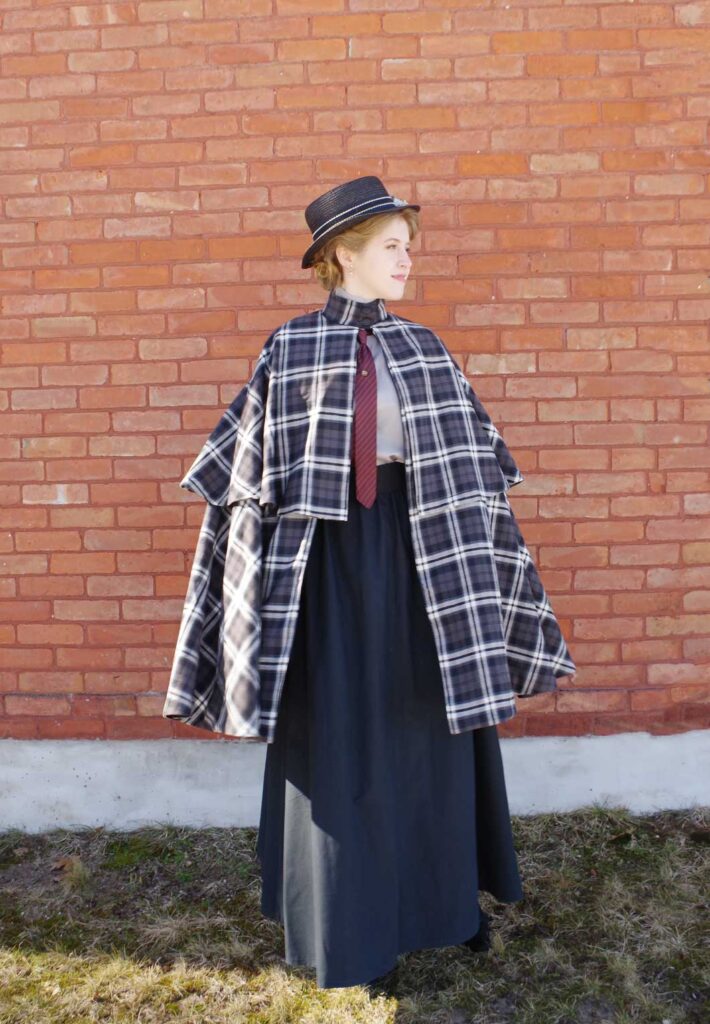











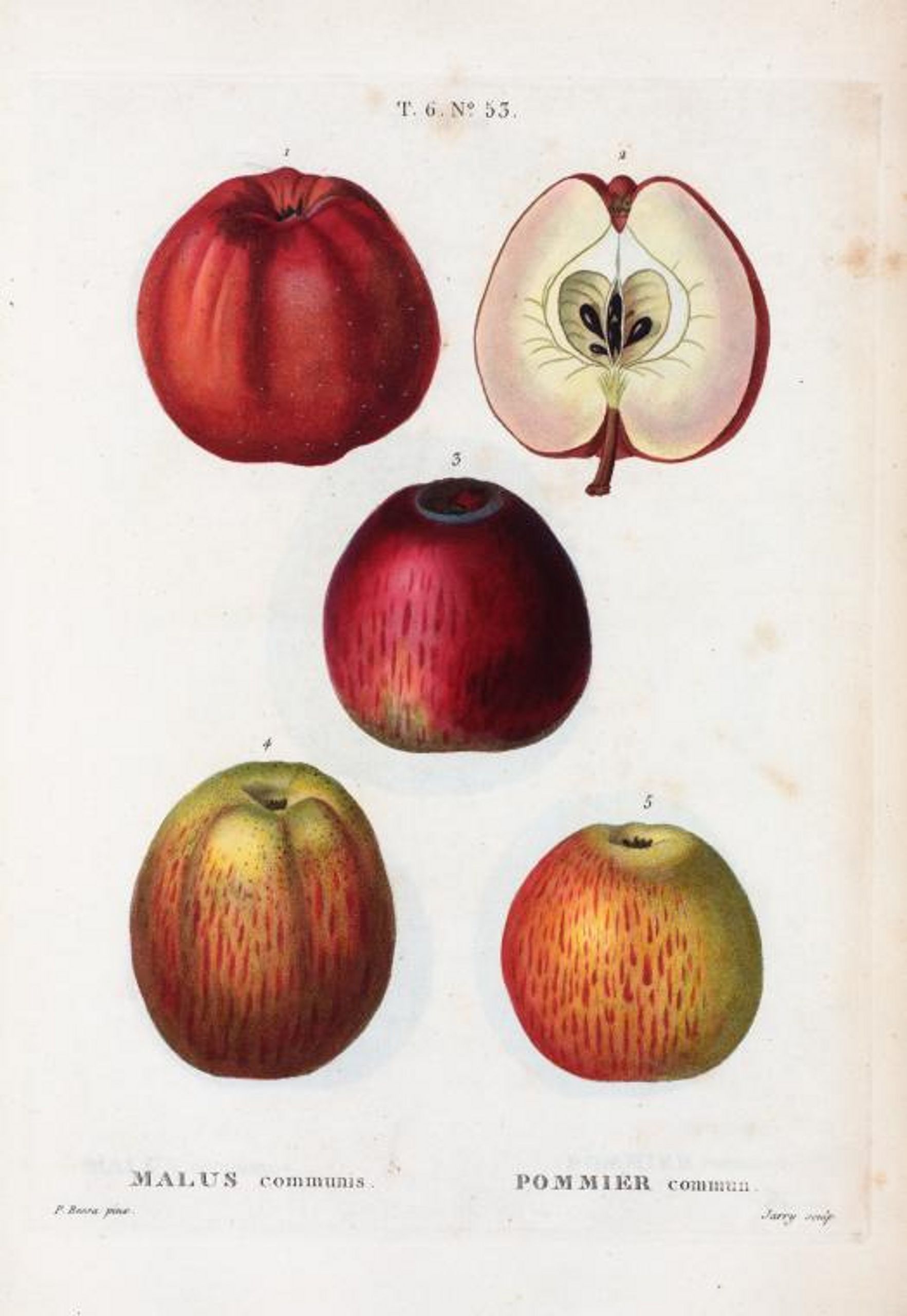
Leave A Comment